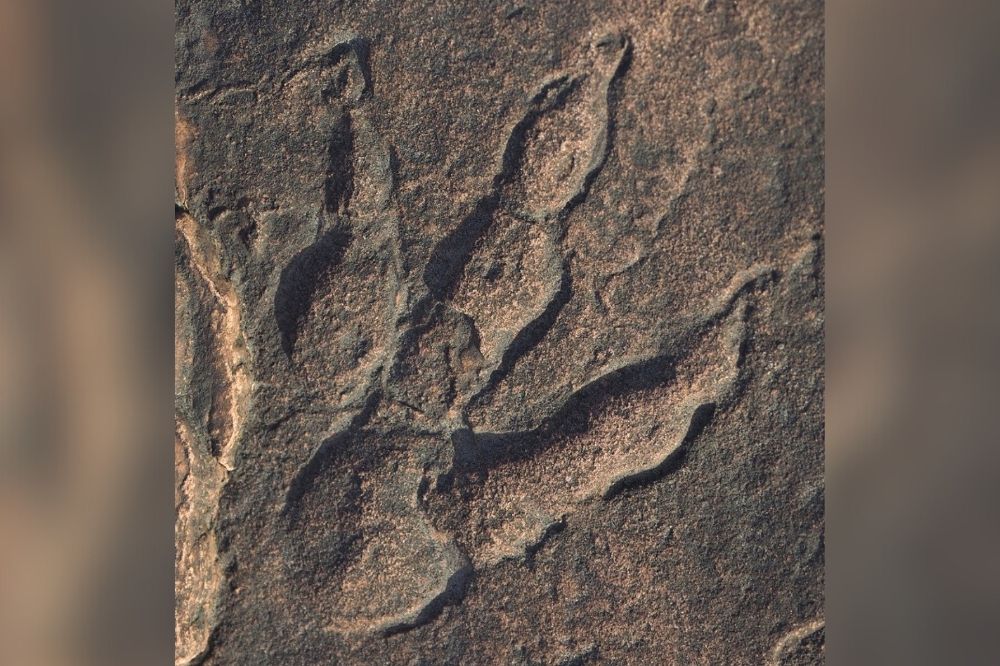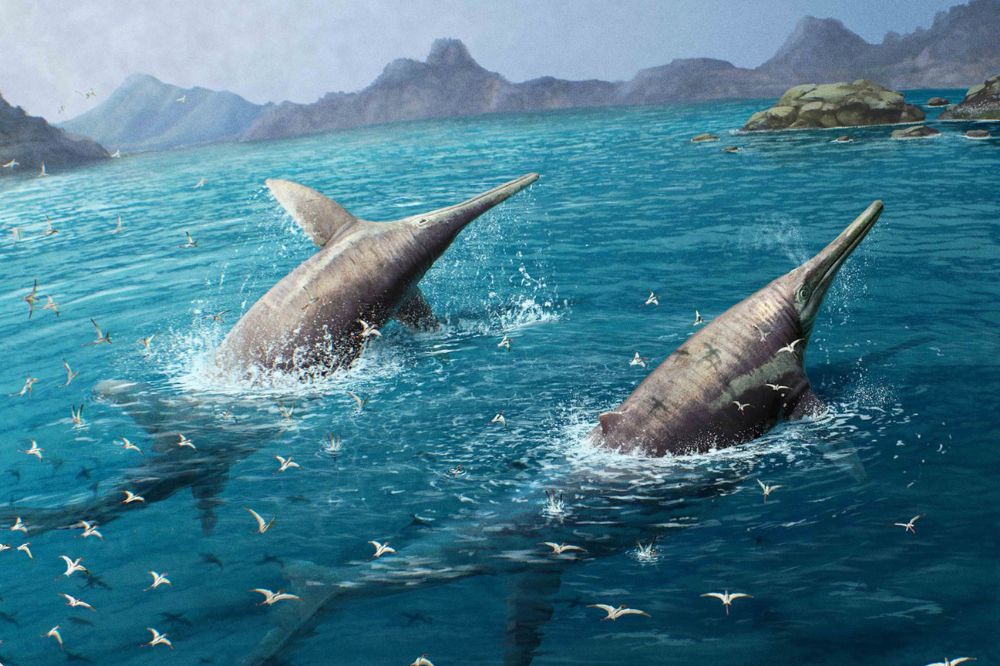Origins of Welsh ‘dragons’ finally exposed by experts

A large fossil discovery has helped shed light on the history of dinosaurs in Wales.
Until recently, the land of the dragon didn’t have any dinosaurs.
However, in the last ten years, several dinosaurs have been reported – but their life conditions were not well known.
In a new study by a team from the University of Bristol and published in Proceedings of the Geologists’ Association, important details have been revealed for the first time.
Experts found that early Welsh dinosaurs from over 200 million year ago lived on a tropical lowland beside the sea.
Dinosaur trackways are known from Barry in south Wales and other sites nearby, showing that dinosaurs had walked across the warm lowlands.

Bones
The discovery was made at Lavernock Point, close to Cardiff and Penarth, where the cliffs of dark-coloured shales and limestones document ancient shallow seas.
At several levels, there are accumulations of bones, including the remains of fish, sharks, marine reptiles and occasionally, dinosaurs.
Former student of the Bristol MSc in Palaeobiology Owain Evans led the study.
He said: “The bone bed paints the picture of a tropical archipelago, which was subjected to frequent storms, that washed material from around the surrounding area, both in land and out at sea, into a tidal zone.
“This means that from just one fossil horizon, we can reconstruct a complex ecological system, with a diverse array of marine reptiles like ichthyosaurs, plesiosaurs and placodonts in the water, and dinosaurs on land.
“I had visited the coast at Penarth all my life, growing up in Cardiff, but never noticed the fossils. Then, the more I read, the more amazing it became.
“Local geologists had been collecting bones since the 1870s, and most of these are in the National Museum of Wales in Cardiff.”
Significant
Cindy Howells, Curator of Palaeontology at the National Museum of Wales, added: “The collections from Lavernock go all the way back to the 19th century, with many sections of the bone bed being collected over the years.
“The presence of dinosaur fossils at the site ensure that it remains one of the most significant localities for palaeontology in Wales.”
Two discoveries made by the team while conducting fieldwork at Lavernock were the fossilized remains of a placodont osteoderm, and a single coelacanth gular bone.
Supervisor Dr Chris Duffin said: “The remains of coelacanths and placodonts are relatively rare in the UK, which makes these finds even more remarkable. These two fossils alone help build a broader picture of what the Rhaetian in the UK would have looked like.”
Professor Michael Benton from Bristol’s School of Earth Sciences, another project supervisor, added: “The volume of dinosaur remains found at Lavernock is extremely exciting, and is a chance to study a complex, and often mysterious period in their evolutionary history.
“We have identified the remains of a large Plateosaurus like animal, along with several bones which likely belonged to a predatory theropod.”
A significant section of the paper is dedicated to the abundant microfossils found at the site, which include fish teeth, scales and bone fragments.
By examining thousands of specimens, the team were able to identify the key species in the shallow seas and work out the relative importance of each.
Support our Nation today
For the price of a cup of coffee a month you can help us create an independent, not-for-profit, national news service for the people of Wales, by the people of Wales.







How is this anything to do with the Welsh dragon, other than the headlines nothing is said about dragons at all. Wasted 30mins of my time reading this 😒 not happy as I really find it hard to read these days with my health conditions, thanks for nothing nation.
You made the decision to read it!! Why blame others for your problems 😔
Dragons resemble dinosaurs, and one should be able to figure out a connection in under 3 minutes.Thank you, Nation, for this tenuous yet true Cymru connection.
The Dragon of Wales has absolutely nothing to do with “Dinosaurs”. It comes from Story of the Meteor that struck Britain in the early 500s. As detailed in Arthurian myth as the Wasteland. Said to have looked like the tail of a Dragon. It caused so much damage that it inspired the Britons to take up the Dragon as a new Battle Standard. Which makes the Flag of Wales the oldest national symbol still is use by a country. Obviously many perish the thought of such ancient connections for Wales. They’d rather have Wales seen as a young country, rather… Read more »